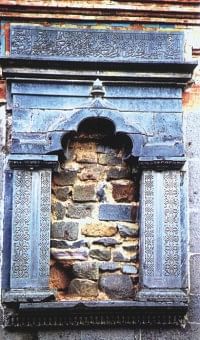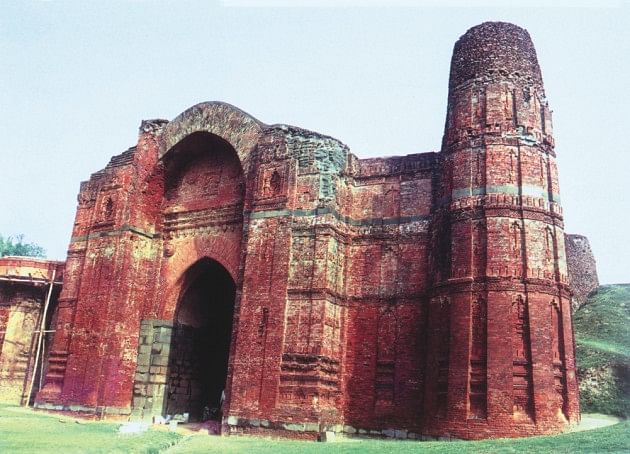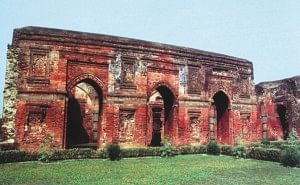| Home - Back Issues - The Team - Contact Us |
 |
| Volume 10 |Issue 09| March 04, 2011 | |
|
|
Photography
The Glamour that was of Gaur Fayza Haq
Books on our historical background are collector's items for us. They are not easily obtained, unless in libraries or bookshops, and that too, at steep prices. Babu Ahmed, a photojournalist for Prothom Alo and other national dailies for two decades – has now brought a book on Gaur, launched at the Bengal Gallery on February 27. Babu says Gaur, the ancient capital of the Sultanate Dynasty, now falls into two parts, one being in Malda, India, and the other being in Bangladesh, in Chapainawabganj, in Rajshahi. The portion which falls in Bangladesh, is relatively small in proportion, with about ten monuments – many of which are under the earth – and we can just hope that this will be excavated some day. “There are plenty of beautiful monuments in India. Many of these are also to be excavated, but in India, unlike here, there are well-to-do, who are patrons of art, and who take up the responsibility of financing the exhibitions. The Government there, also readily serve as an eager patron to promote the rich legacy, says Babu Ahmed. Why Babu is bitter about the lack of interest in excavation in Bangladesh. He said that although there are people here who have a lot of capital, they are not interested in protecting heritage sites. The moneyed businessmen with conglomerate complexes would rather spend money on chandeliers and gala evenings, with floodlights and fireworks at the drop of a hat. “Archaeology, with protected monuments in India, is stronger by far in India, with relevant research and digging being done all the time. Our government's budget reserved for archaeology should also expand. The authorities should not be tight fisted about our cultural past. I believe this is due to lack of patriotism and laissez – faire attitude towards our past. I've visited the Gaur sights four times, so I should know the facts.”
Since the 1204 AD, Muslim rule has flourished there. Natural disasters and 'relic-hunters' are there. Protection, however, could improve matters in the Bangladesh end of Gaur. “Due to humidity, the historical relics will be destroyed with time,” says Babu Ahmed. In order to create public awareness, he has established a photo gallery: This is a photo archive and research centre, as an extension of his residence in Shegunbagicha. He has then presented his work at Dhaka and overseas, as in Germany (at the Museum of Islamic art (2005), and Iran.
People are aware of the fact that we belong to the underdeveloped and poverty stricken world, which is known for its corruption and illiteracy. The fact, that nevertheless , we have a rich cultural past is something the people – world over – are not aware of says. During the celebration of celebrations of Dhaka as a Moghul capital city the books have had more publicity, with a guiding map. The fourth publication of his books are underway. This Ahmed has done by writing books, which he has presented; he has also arranged seminars on the subject. His first wring was “Selected Hindu Temples of Bangladesh” (published in 2004), and “Mogul Monuments of Bangladesh” (published in 2005). This, one is told is being taught at the university levels. The display in Bengal Gallery, is his fourth exhibit, focusing on 25 monuments. His historical endeavour is run by him and his wife Nazli Chowdhury, a lecturer of CODA college in Islamic History. Copyright
(R) thedailystar.net 2010 |



